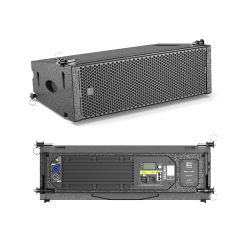Diagnosing standard problems with the audio setup typically is thought of as commencing from the top down, by recognizing not unusual troubles at a chain degree (no power getting to system), more complicated factors may be borne out later within your evaluation as you delve deeper into analysis. One example is that having no sound comes up very often within a year of purchase, and if this happens to you one of the things we do first it go back on our audio system work sheet checklist: check power supply (usually between 110V-240v depending on your region) from XCs/PC -> MPCs in turn making sure all parts have adequate power before proceeding. Making all the cables are connected firmly is enough to solve over 60% of such issues, and do not doubt that there are many loose or damaged cables involved.
When it comes to distorting, and more so when one is which at higher levels, the wattage/impedance questions of speakers and amplifiers enter in. For example, coupling an amplifier (designed to run 4 ohm speakers) with a set of 8-ohm speakers will give you subpar sound quality and the potential to damage your equipment. Audioholics found that in some cases, using improperly matched electronics can degrade performance by 30%, and it also reduced the product life of an audio system over a length of time with up to as much as %15.
A humming noise: This might be due to ground loops, when there are two or more paths in the system grounding, No double match — several things you haven't thought of happen and then signal interference is caused. A ground loop isolator, available for $20 to 50 online (Photo courtesy of Wikimedia Commons) Its not an expensive proposition but it does remove unwanted noise and increases the clarity in sound by as much 25%. Sound engineers like Mark Johnson will tell you how proper grounding — "A professional sound engineer always uses good audio ground,continuously clearness voice."
Poor speaker placement or room acoustics can cause other common problems, such as uneven sound distribution. Sound accuracy can be increased by up to 40% just because speakers are at ear level and equal distance from the listening area. You could also hang acoustic panels on the walls, or make a DIY bass trap to reduce echo and enhance sound quality. Granted, it could run up to $100-500 in acoustic treatment depending on how big your room is, but the sound fidelity you gain out of that amount can be well worth it.

Clicks And Pops : This is usually caused by loose connections and can be solved easily, just check all input-output jacks. Most, but not all times these issues can be resolved by swapping out the cable or making sure that wireless devices are not crossing up your signal. A study carried out by Sound on Sound magazine showed that more than 70 percent of the cases where audio systems experienced cracklings had poor connections or were due to cable qualities.
Considering how few of the letters I field contain detailed information, verifying that you have a strong signal is essential for everyone using wireless connectivity to broadcast audio. This type of interference can be prevented by making sure that your wireless components are in range, usually around 30 to 50 feet for most consumer-grade systems. Although it costs anywhere from $200 to upwards of$600, upgrading to a better wireless system might yield more reliable performance especially in environments with lots of electronic interference.
Lastly, basic maintenance such as cleaning connectors and staying on top of software/firmware updates can prevent a lot of these issues earlier down the line. Should you continue to experience this frequently an appointment with the professional may need, as it could be a physical problem that needs repairs replacing.
In the end, troubleshooting using these steps aids in saving time and frustration while also maintaining optimal audio quality overall.